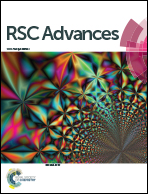Discrimination of moldy wheat using terahertz imaging combined with multivariate classification
Abstract
Terahertz (THz) imaging was employed to develop a novel method for discriminating wheat of varying states of moldiness. Spectral data, in the range of 0.2–1.6 THz, were extracted from regions of interest (ROIs) in the THz images. Principal component analysis (PCA) was used to evaluate the spectral data and determine the cluster trend. Six optimal frequencies were selected by implementing PCA directly for each image's ROI. Classification models for moldy wheat identification were established using the support vector machine (SVM) method, a partial least-squares regression analysis, and the back propagation neural network method. The models developed from these methods were based on the full and optimal frequencies, using the top three principal components as input variables. The PCA-SVM method achieved a prediction accuracy of over 95%, and was implemented at every pixel in the images to visually demonstrate the moldy wheat classification method. Our results indicate that THz imaging combined with chemometric algorithms is efficient and practical for the discrimination of moldy wheat.


 Please wait while we load your content...
Please wait while we load your content...